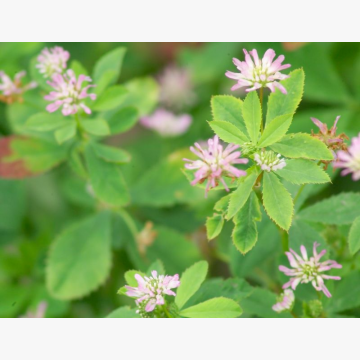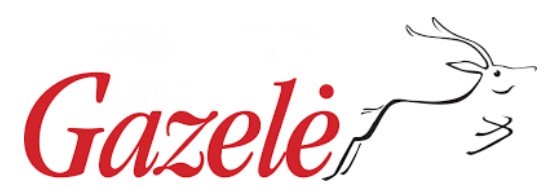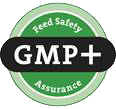- Home
- Seeds
- Fodder grasses and legumes
- SMALL GRAIN LEGUMES
- Persian clover (annual) LIGHTNING (coated seeds)
FOR CONSULTATIONS APPLY TO:
Commercial director
Lina Smalskienė
tel. +370 618 02 551
e-mail linak@agrolitpa.lt
Sales manager
Tautvydas Kliučininkas
tel. +370 681 35 093
e-mail tautvydask@agrolitpa.lt
Sales manager
Eglė Petkevičienė
tel. +370 626 95 458
e-mail eglep@agrolitpa.lt
Sales manager
Kotryna Nakrošytė
tel.: +370 601 39 282
e-mail kotryna@agrolitpa.lt
Persian clover (annual) LIGHTNING (coated seeds)
- It is one of the most productive annual legume plants
- Produces high protein fodder
- In good conditions, the annual possible yield of dry matter – up to 15.7 t/ha
- Early and abundant first yield
- Regenerates well after cutting or grazing
- Multiple harvests are possible with sufficient moisture
- Easy to establish, even when sowing late
- Growth habit – semi-erect
- The plant is almost erect, bush-shaped
- Plant height – about 50-70 cm
- Stems – thick, hollow, thin-walled, soft, very susceptible to lodging
- Stems become woody very slowly
- Leaves – large
- Flowering intensity – medium
- Flowering – medium late/late
- The flowers are pink and have a specific odor
- Maturity – medium late/late (about 145 days to flowering)
- The root system is rather shallow and branched
- Tolerates flooding
- Tolerant to anthracnose (Kabatiella caulivora) (Clover scorch)
- Susceptible to leaf rust Uromyces trifolii-repentis
- Soft seeds (hard seeds consist only 1-2 %)
- 1000 seed weight – 1.25-1.70 g
- Seed yield – 150-300 kg/ha (potential – 1000 kg/ha)
- Used for fodder production – hay, silage, grazing
- Nutritious and highly digestible
- Crude protein content – 16-24 %
- Fiber content – low
- NDF content – 24-45 %
- Suitable for annual fodder mixes
- Especially suitable for pasture mixtures with ryegrass or oats
- Suitable for growing as a crop rotation plant, for a 1-year break in crop rotation
- Fixes nitrogen, improves the soil
- Strong root system and easily decomposable aerial part contribute to soil protection and erosion control, making it an excellent choice for green manure
- When sowed as a cover/catch crop, recommendation to sow denser; in such way stronger fight against weeds, produces a higher yield of green mass
- Can produce 3.0-3.5 t/ha of dry matter when grown as a cover/catch crop
- Reduces the number of weeds (by cutting the plants for forage before the growing together weeds have produced their seeds)
- Adapts to a wide range of soils, except sandy and acidic
- Best suited for growing in neutral or slightly alkaline soils (pHCaCl2 5.5-8.5)
- Tolerates clay soils
- The required amount of precipitation during vegetation is 450-500 mm
- First dry matter yield – 5 points (out of 9)
- Overall score – 5.8 points (out of 9)
- Quality – 4.3 points (out of 9)
- Initial growth/early development – 4.4 points (out of 9)
- Competitiveness – 6.1 points (out of 9)
- Persistence – 7.3 points (out of 9)
- Resistance to the pathogen (Cymadothea trifolii) – 3.8 points (out of 9)
- Amount of dry matter – 4.9 points (out of 9)
- Overall index – 5.22 points (out of 9)
*Rating scale: 1 – very high or good; 5 – average; 9 – Very low or poor
*Trifolium resupinatum: results of yield studies and evaluations in 2013-2015. Source: Suter D., Frick R., Hirschi H. Aebi Ph. Neue Sorten von Westerwoldischem Raigras und Perserklee empföllen. Pflanzenbau | Neue Sorten von Westerwoldischem Raigras und Perserklee empfohle. Agrarforschung Schweiz 7(2): 72–79, 2016.
- First yield of dry matter – 6 points (out of 9)
- Beginning of flowering – 5 points (out of 9)
- Plant height in the early growth stage – 5 points (out of 9)
- Regrowth – 5 points (out of 9)
- Development after sowing – 4 points (out of 9)
- Tendency to lodging – 4 points (out of 9)
- Raw protein content – 5 points (out of 9)
*Results of studies in Germany (rating scale: 1 – very early, low; 5 – medium; 9 – very late, high)
The advantages of coated seeds:
- Allows more precisely to incorporate small size seeds with low sowing rate
- Protect seed from mechanic stress caused by sowing machines
- Protect seed from birds and insects - in fact coating components are not toxic but they don’t even attract them
- The extra-resistance of the coating avoids dust leakage and dust accumulation in the sowing machine
- Have less hard-seed content which means higher immediate germination percentage on the establishment of crop
The varietal parameters may differ from those indicated here when the testing circumstances differ from quondam
Recommended sowing rate: 12-15 kg/ha
Recommended sowing rate when growing for green manure: 15-20 kg/ha
Keravos sreet. 17, Kerava,
LT-38 131 Panevėžys district, LITHUANIA
Enterprise's code 168598128
VAT code LT685981219
Tel. +370 615 11 315
E. mail info@agrolitpa.lt




.JPG)

